Impact Resistant Flax Fiber Fabrics Using Shear Thickening Fluid
Abstract
:1. Introduction
2. Materials and Methods
2.1. Materials
2.2. Processing
2.3. Testing
2.3.1. Rheological Characterization of STF
2.3.2. Puncture
2.3.3. Impact
3. Results and Discussion
3.1. Rheological Tetsing
3.2. Puncture Testing
3.3. Ballistic Impact Testing
3.4. SEM Imaging
4. Conclusions and Future Recommendations
Author Contributions
Funding
Data Availability Statement
Conflicts of Interest
References
- Boersma, W.H.; Laven, J.; Stein, H.N. Shear thickening (dilatancy) in concentrated dispersions. AIChE J. 1990, 36, 321–332. [Google Scholar] [CrossRef] [Green Version]
- Lee, Y.S.; Wagner, N.J. Dynamic properties of shear thickening colloidal suspensions. Rheol. Acta 2003, 42, 199–208. [Google Scholar] [CrossRef]
- Seshimo, K. Viscoelastic Damper. U.S. Patent 4,759,428, 26 July 1988. [Google Scholar]
- Williams, T.; Day, J.; Pickard, S. Surgical and Medical Garments and Materials Incorporating Shear Thickening Fluids. U.S. Patent 2,007,000,440,086, 15 October 2009. [Google Scholar]
- Gurgen, S.; Kushan, M.C. High performance fabrics in body protective systems. Mater. Sci. Forum. 2016, 880, 132–135. [Google Scholar] [CrossRef]
- Hassan, T.A.; Rangari, V.K.; Jeelani, S. Synthesis, processing and characterization of shear thickening fluid (STF) impregnated fabric composites. Mater. Sci. Eng. A 2010, 527, 2892–2899. [Google Scholar] [CrossRef]
- Wetzel, E.D.; Lee, Y.S.; Egres, R.G.; Kirkwood, K.M.; Kirkwood, J.E.; Wagner, N. The Effect of Rheological Parameters on the Ballistic Properties of Shear Thickening Fluid (STF)- Kevlar Composites. AIP Conf. Proc. 2004, 712, 288–293. [Google Scholar]
- Rosen, B.A.; Laufer, C.N.; Kalman, D.P.; Wetzel, E.D.; Wagner, N.J. Multi-Threat performance of Kaolin-based shear thickening fluid (STF)-treated fabrics. In Proceedings of the SAMPE 2007, Baltimore, MD, USA, 3–7 June 2007. [Google Scholar]
- Kalman, D.P.; Merrill, R.L.; Wagner, N.J.; Wetzel, E.D. Effect of Particle Hardness on the Penetration behavior of fabrics intercalated with dry particles and concentrated particle-fluid suspensions. Appl. Mater. Interfaces 2009, 1, 2602–2612. [Google Scholar] [CrossRef]
- Barnes, H.A. Shear thickening (‘Dilatency’) in suspensions of nonaggregating solid particles dispersed in Newtonian liquids. J. Rheology 1999, 33, 329–366. [Google Scholar] [CrossRef]
- Srivastava, A.; Majumdar, A.; Butola, B.S. Improving the impact resistance of textile structures by using shear thickening fluids: A review. Crit. Rev. Solid State Mater. Sci. 2012, 37, 115–129. [Google Scholar] [CrossRef]
- Liu, X.-Q.; Bao, R.-Y.; Wu, X.-J.; Yang, W.; Xie, B.-H.; Yang, M.-B. Temperature induced gelation transition of a fumed silica/PEG shear thickening fluid. RSC Adv. 2015, 5, 18367–18374. [Google Scholar] [CrossRef]
- Mahfuz, H.; Clements, F.; Stewart, J. Development of Stab Resistant Body Armor using Fumed SiO2 Nanoparticles Dispersed into Polyethylene Glycol (PEG) through Sonic Cavitation. NSTI-Nanotech. 2006, 1, 358–361. [Google Scholar]
- Rangari, V.K.; Hassan, T.A.; Mahfuz, H.; Jeelani, S. Synthesis of Shear Thickening Fluid Using Sonochemical Method. NSTI-Nanotech. 2006, 2, 637–640. [Google Scholar]
- Afeshejani, S.H.A.; Sabet, S.A.R.; Zeynali, M.E.; Atai, M. Energy Absorption in a Shear-Thickening Fluid. J. Mater. Eng. Perform. 2014, 23, 4289–4297. [Google Scholar] [CrossRef]
- Park, Y.; Kim, Y.; Baluch, A.H.; Kim, C.-G. Empirical study of the high velocity impact energy absorption characteristics of shear thickening fluid (STF) impregnated Kevlar fabric. Int. J. Impact Eng. 2014, 72, 67–74. [Google Scholar] [CrossRef]
- Park, Y.; Baluch, A.H.; Kim, Y.; Kim, C.-G. High Velocity Impact Characteristics of Shear Thickening Fluid Impregnated Kevlar Fabric. Int. J. Aeronaut. Space Sci. 2013, 14, 140–145. [Google Scholar] [CrossRef] [Green Version]
- Khodadadi, A.; Liaghat, G.; Vahid, S.; Sabet, A.; Hadavinia, H. Ballistic performance of Kevlar fabric impregnated with nanosilica/PEG shear thickening fluid. Compos. Part B Eng. 2019, 162, 643–652. [Google Scholar] [CrossRef] [Green Version]
- Yeh, S.K.; Lin, J.J.; Zhuang, H.Y.; Chen, Y.C.; Chang, H.C.; Zheng, J.Y.; Yang, L.Y.; Lee, K.C.; Chen, Y.L.; Rwei, S.P. Light shear thickening fluid (STF)/Kevlar composites with improved ballistic impact strength. J. Polym. Res. 2019, 26, 155–167. [Google Scholar] [CrossRef]
- Lee, Y.S.; Wetzel, E.D.; Wagner, N.J. The ballistic impact characteristics of Kevlar woven fabrics impregnated with a colloidal shear thickening fluid. J. Mater. Sci. 2003, 38, 2825–2833. [Google Scholar] [CrossRef]
- Majumdar, A.; Butola, B.S.; Srivastava, A. An anlysis of deformation and energy absorption modes of shear thickening fluid treated Kevlar fabrics as soft body armour materials. Mater. Des. 2013, 51, 148–153. [Google Scholar] [CrossRef]
- Egres, R.G., Jr.; Decker, M.J.; Halbach, C.J.; Lee, Y.S.; Kirkwood, J.E.; Kirkwood, K.M.; Wagner, N.J.; Wetzel, E.D. Stab Resistance of Shear Thickening Fluid (STF)-Kevlar Composites for Body Armor Applications. Transform. Sci. Technol. Curr. Future Force 2006, 264–271. [Google Scholar] [CrossRef]
- Rao, H.; Hosur, M.V.; Mayo, J.; Burton, S.; Jeelani, S. Stab Characterization of Hybrid Ballistic Fabrics. In Proceedings of the SEM Annual Conference, Albuquerque, NM, USA, 1–4 June 2009; pp. 264–271. [Google Scholar]
- Kang, T.J.; Hong, K.H.; Yoo, M.R. Preparation and properties of fumed silica/Kevlar composite fabrics for application of stab resistant material. Fibers Polym. 2010, 11, 719–724. [Google Scholar] [CrossRef]
- Feng, X.; Li, S.; Wang, Y.; Wang, Y.; Liu, J. Effects of different silica particles on quasi-static stab resistant properties of fabrics impregnated with shear thickening fluids. Mater. Des. 2014, 64, 456–461. [Google Scholar] [CrossRef]
- Qin, J.; Zhang, G.; Zhou, L.; Li, J.; Shi, X. Dynamic/quasi-static stab-resistance and mechanical properties of soft body armour composites constructed from Kevlar fabrics and shear thickening fluids. RSC Adv. 2017, 7, 39803–39813. [Google Scholar] [CrossRef] [Green Version]
- Haro, E.E.; Szpunar, J.A.; Odeshi, A.G. Ballistic impact response of laminated hybrid materials made of 5086-H32 aluminum alloy, epoxy, and Kevlar® fabrics impregnated with shear thickening fluid. Compos. Part A Appl. Sci. Manuf. 2016, 87, 54–65. [Google Scholar] [CrossRef]
- Gassan, J. A study of fibre and interface parameters affecting the fatigue behavior of natural fibre composites. Compos. Par A Appl. Sci. Manuf. 2002, 33, 369–374. [Google Scholar] [CrossRef]
- ASTM F1342/F1342M-05R22; Standard Test Method for Protective Clothing Material Resistance to Puncture. ASTM: West Conshohocken, PA, USA, 2022. [CrossRef]
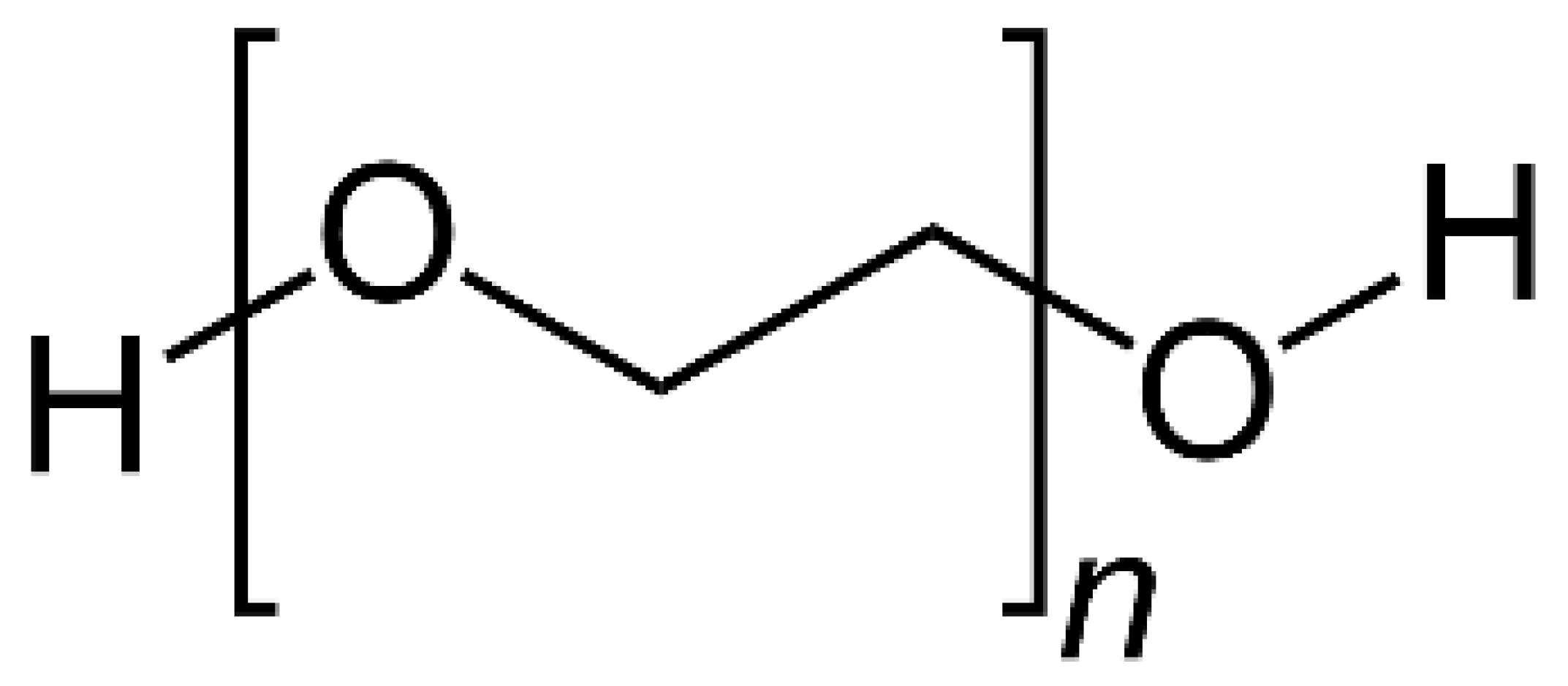


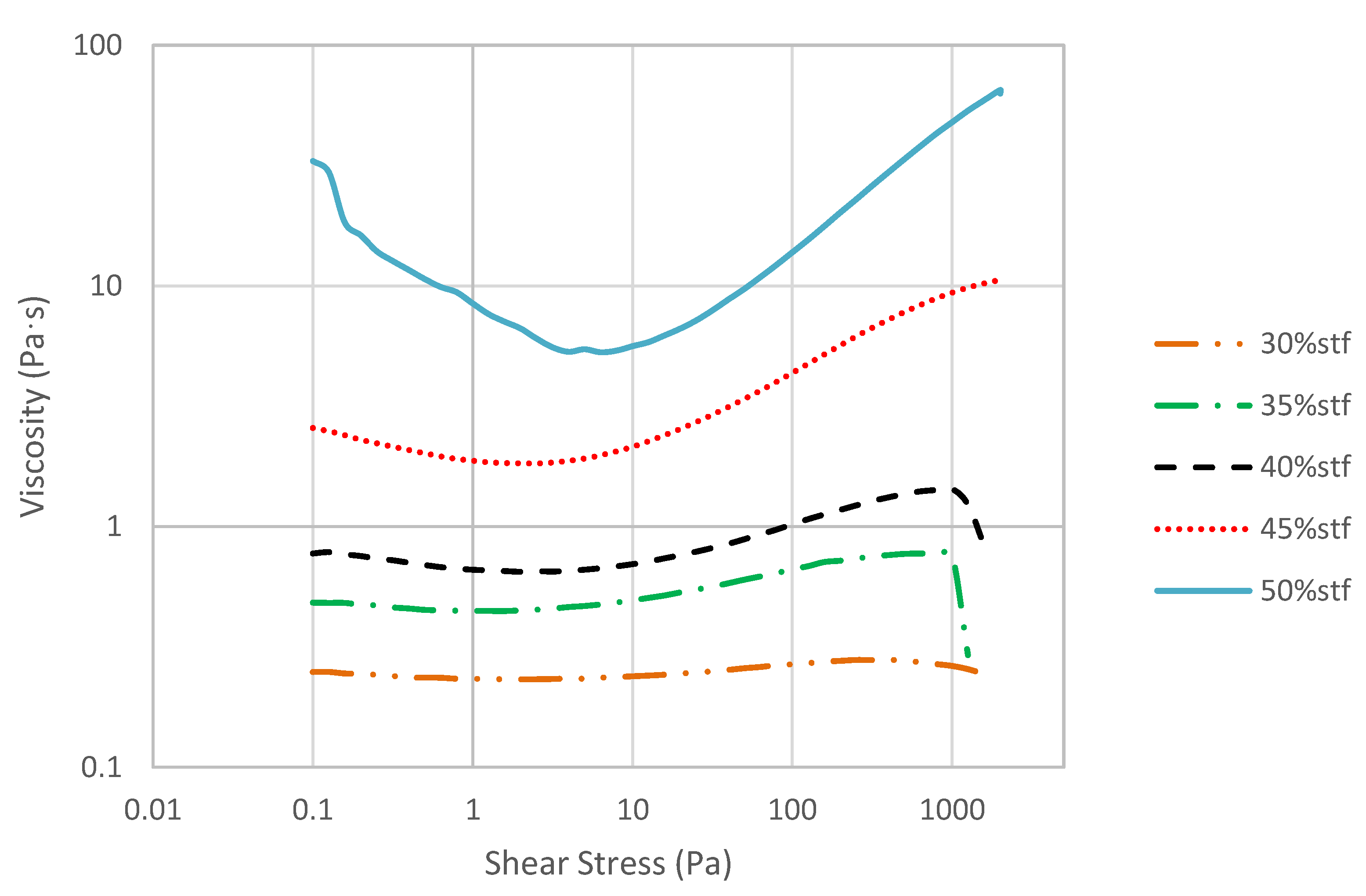
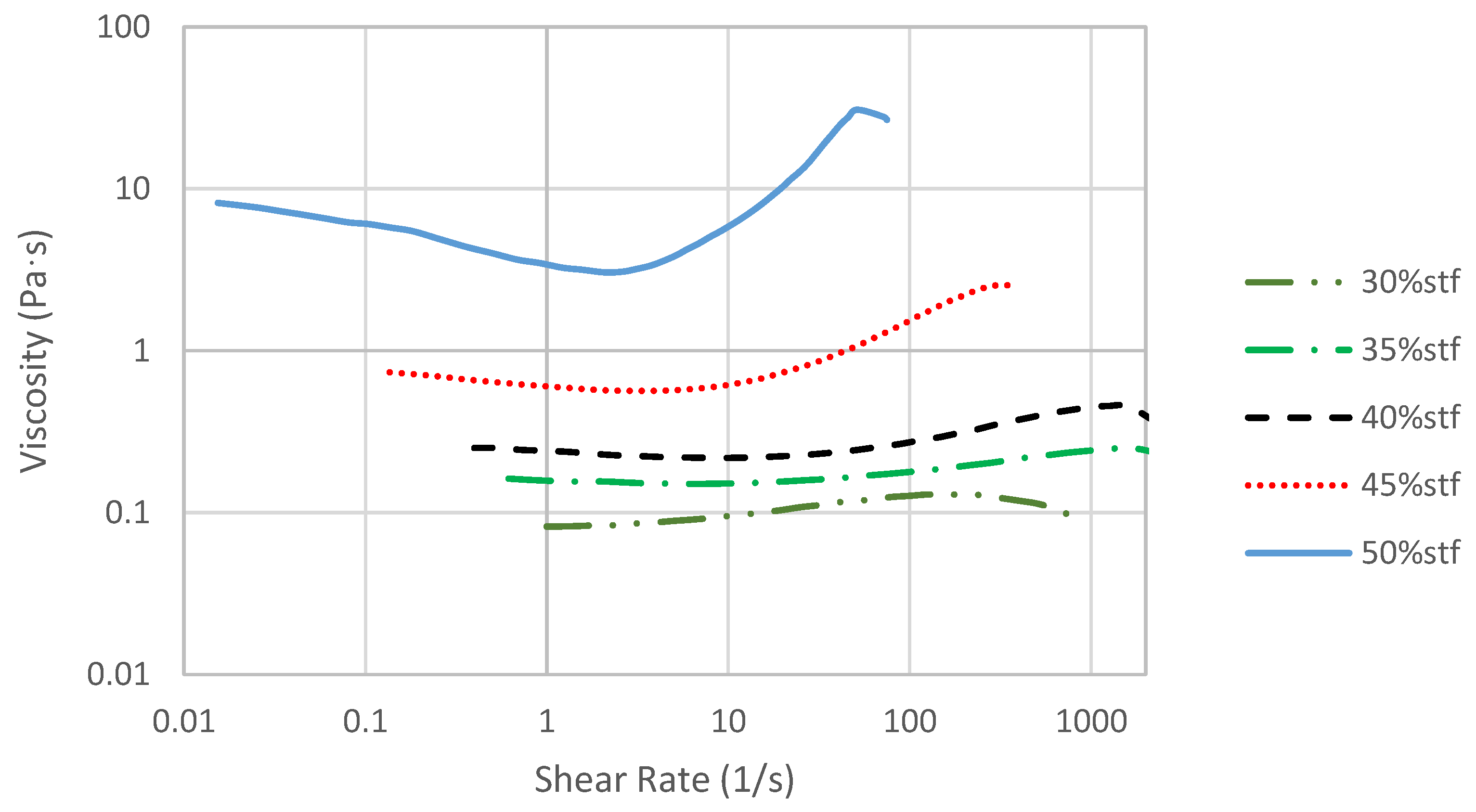
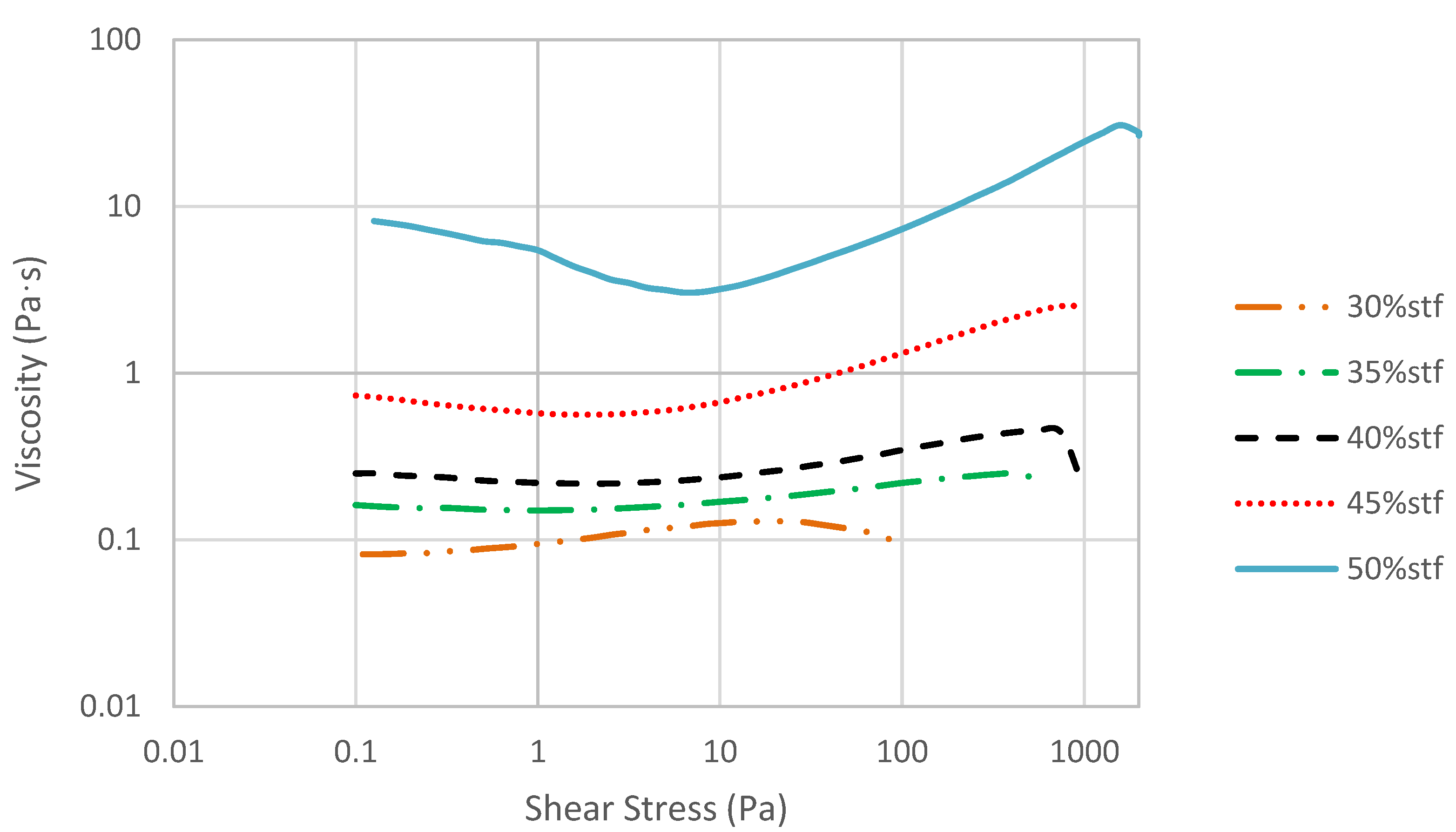
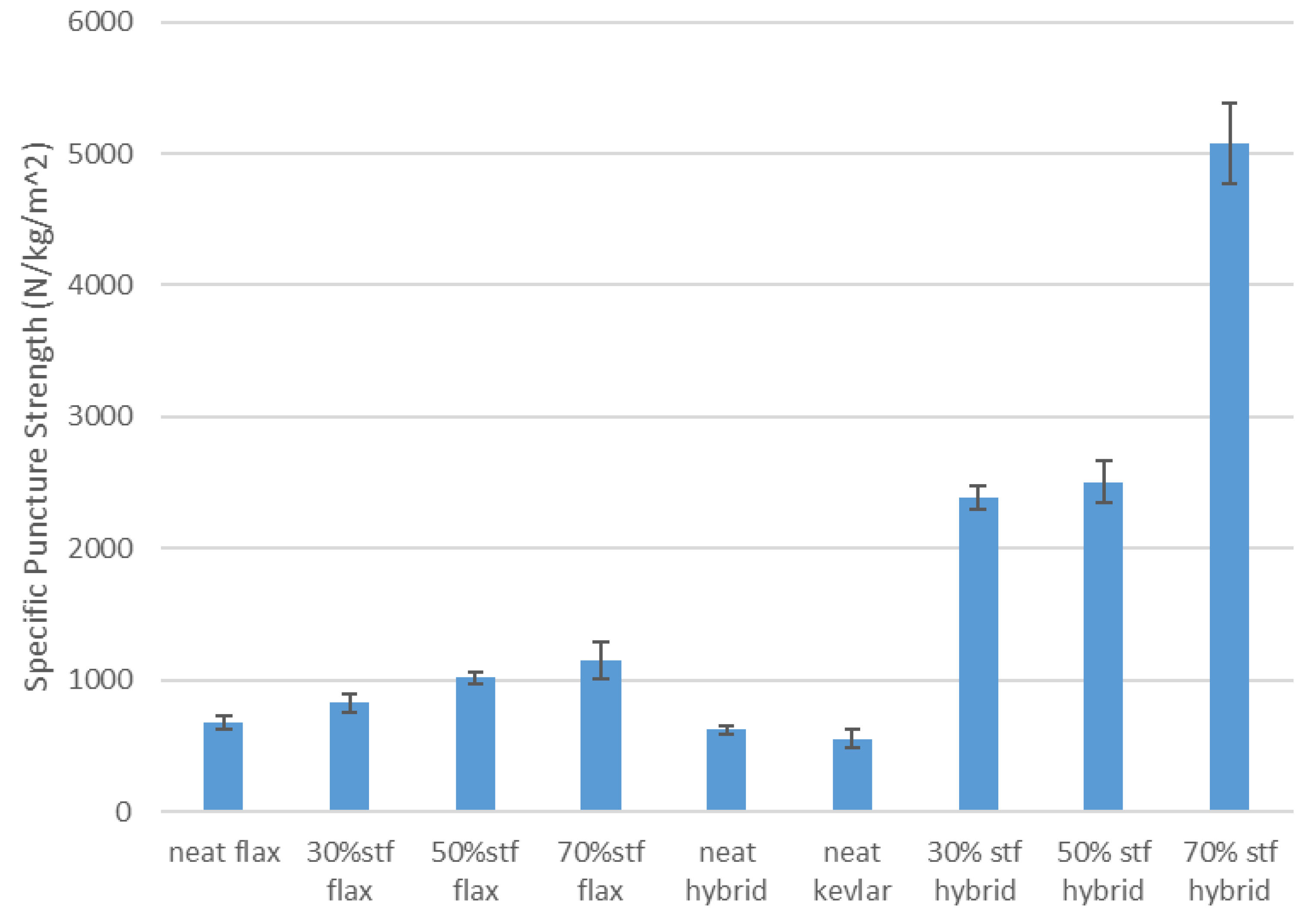
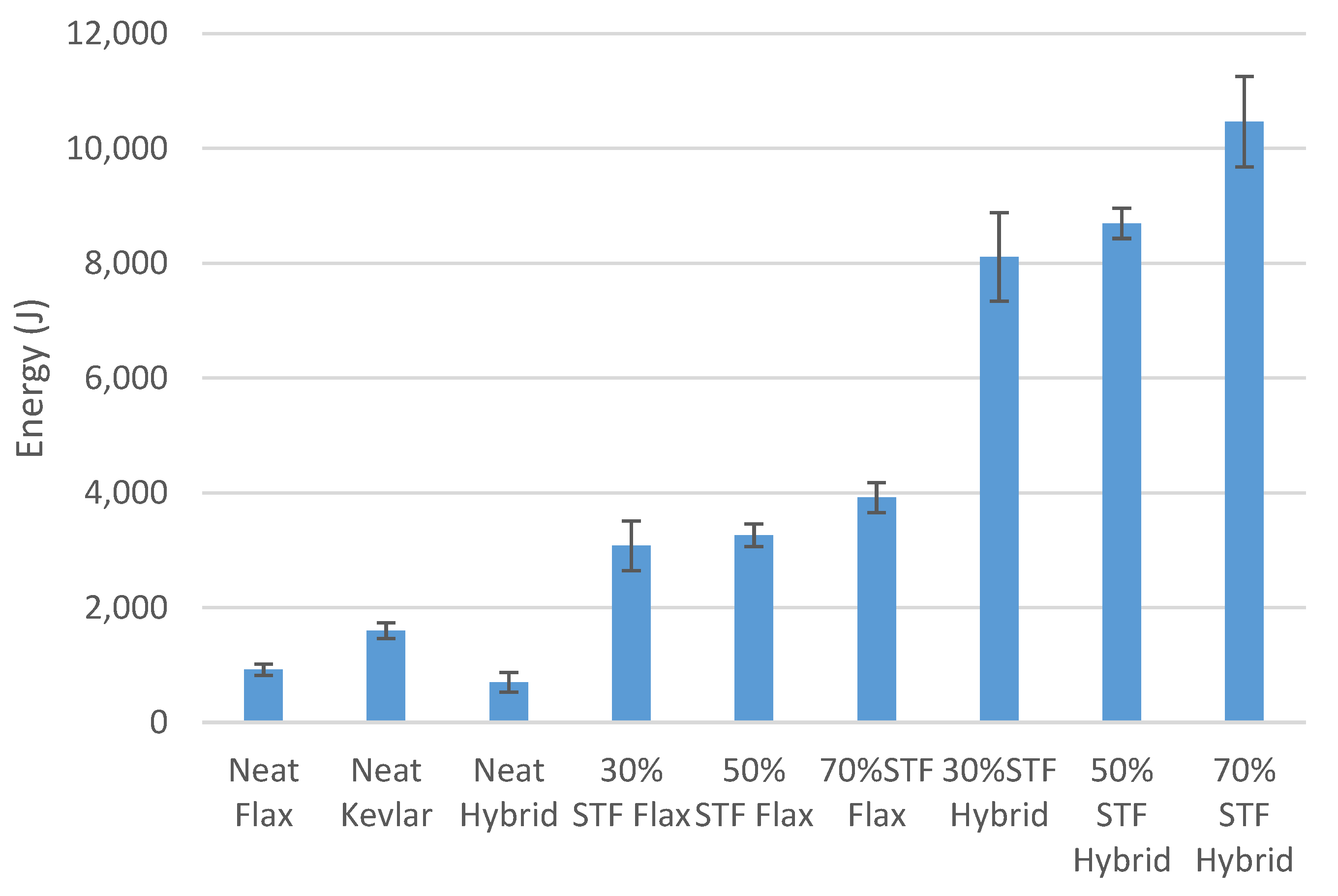
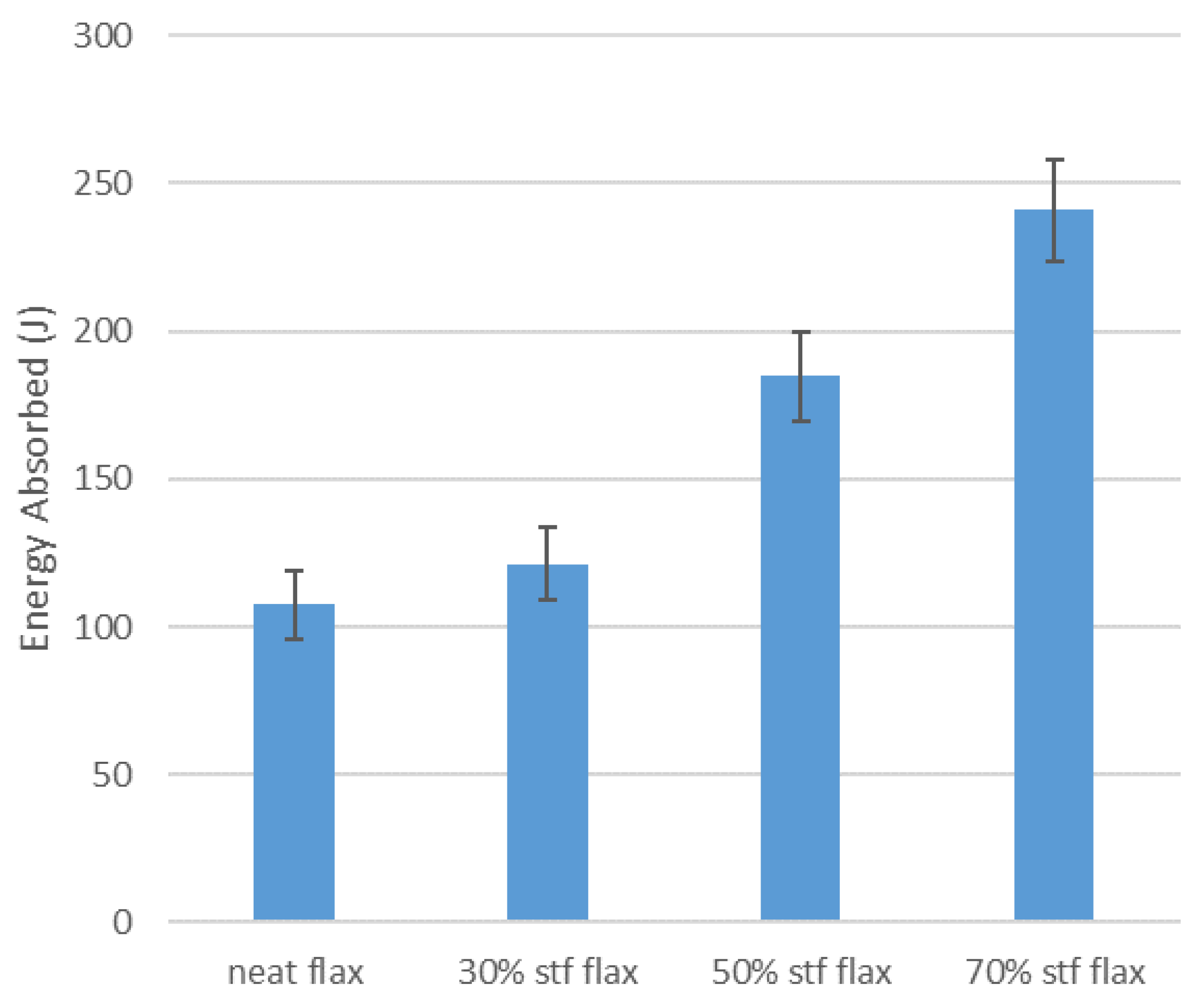




| Average Maximum Force (N) | Standard Deviation | Average Displacement at Maximum Force (mm) | Standard Deviation | |
|---|---|---|---|---|
| Neat flax | 279.30 | 45.90 | 10.15 | 1.10 |
| 30% STF flax | 681.80 | 69.78 | 12.18 | 1.67 |
| 50% STF flax | 788.85 | 43.30 | 13.37 | 0.55 |
| 70% STF flax | 990.51 | 142.67 | 13.34 | 0.09 |
| Average Maximum Force (N) | Standard Deviation | Average Displacement at Maximum Force (mm) | Standard Deviation | |
|---|---|---|---|---|
| Neat Kevlar® | 404.50 | 67.50 | 11.60 | 0.52 |
| Neat hybrid | 232.37 | 69.52 | 9.71 | 1.99 |
| 30% STF hybrid | 1641.62 | 85.01 | 15.51 | 0.89 |
| 50% STF hybrid | 1929.93 | 161.41 | 14.48 | 0.25 |
| 70% STF hybrid | 2210.36 | 307.82 | 13.13 | 0.52 |
Disclaimer/Publisher’s Note: The statements, opinions and data contained in all publications are solely those of the individual author(s) and contributor(s) and not of MDPI and/or the editor(s). MDPI and/or the editor(s) disclaim responsibility for any injury to people or property resulting from any ideas, methods, instructions or products referred to in the content. |
© 2023 by the authors. Licensee MDPI, Basel, Switzerland. This article is an open access article distributed under the terms and conditions of the Creative Commons Attribution (CC BY) license (https://creativecommons.org/licenses/by/4.0/).
Share and Cite
Fehrenbach, J.; Hall, E.; Gibbon, L.; Smith, T.; Amiri, A.; Ulven, C. Impact Resistant Flax Fiber Fabrics Using Shear Thickening Fluid. J. Compos. Sci. 2023, 7, 31. https://doi.org/10.3390/jcs7010031
Fehrenbach J, Hall E, Gibbon L, Smith T, Amiri A, Ulven C. Impact Resistant Flax Fiber Fabrics Using Shear Thickening Fluid. Journal of Composites Science. 2023; 7(1):31. https://doi.org/10.3390/jcs7010031
Chicago/Turabian StyleFehrenbach, Joseph, Eric Hall, Luke Gibbon, Tanner Smith, Ali Amiri, and Chad Ulven. 2023. "Impact Resistant Flax Fiber Fabrics Using Shear Thickening Fluid" Journal of Composites Science 7, no. 1: 31. https://doi.org/10.3390/jcs7010031





